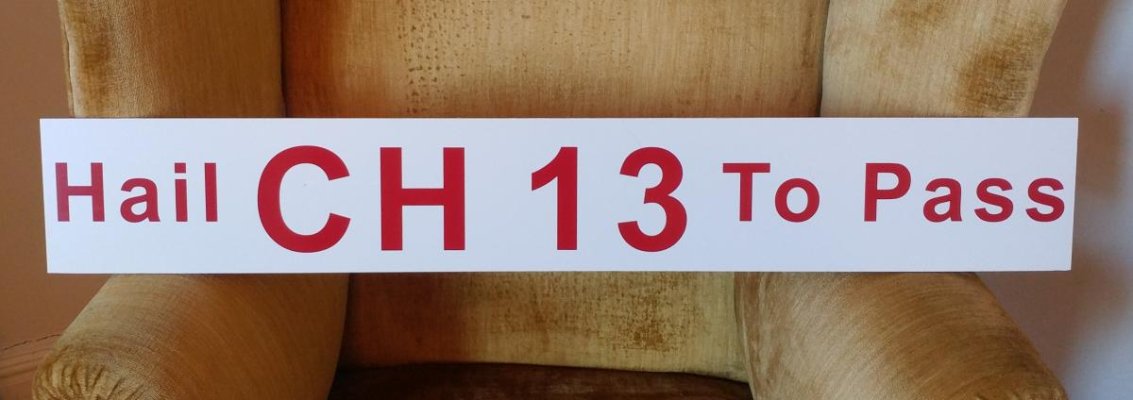Roger Long
Senior Member
OK, I’m going to try this idea which came up in discussions a couple months ago about radio usage in passing situations. I had this sign made up which I am going to hang below our name board (the name on our transom is obscured by the dinghy). This is in response to the generalized confusion we experienced in the snowbird boat parades last fall when some people were making their passing calls on 16 and some on 13. The 16 calls were usually at high power tying up the frequency for miles up and down the ICW as well as annoying people far offshore. This can also compromise safety if someone is in trouble offshore and only able to get in a brief Mayday call. We would ask 16 callers to switch to 13 but this further tied up the frequency and the passing boat would often be much closer by the time we got down to making passing arrangements. The Coast Guard agrees that passing arrangements should be made on 13 as I’ve often heard them call to ask radio users to shift their passing traffic off 16. I’m sure I’ll quickly get some replies that initial contact should always be made on 16 as everyone must monitor it. This is true as far as contact with a vessel not in visual contact or which may not be expecting your call. However, the regs seem pretty clear that 13 is to be used once vessels are in a situation where radio use to discuss passing or meeting is indicated. Passing on the ICW certainly applies to that. Further 13 is a low power channel. If someone is close enough to see this sign, be reminded of proper procedure, and know that we are expecting it, an initial call on 13 will avoid their forgetting (as I have so often done) to switch 16 to low power and blasting half a state with their call. We’ll always be monitoring 16, of course, but I urge other boaters to include 13 in their scan and promote proper use of the channel in passing.
Attachments
Last edited:



